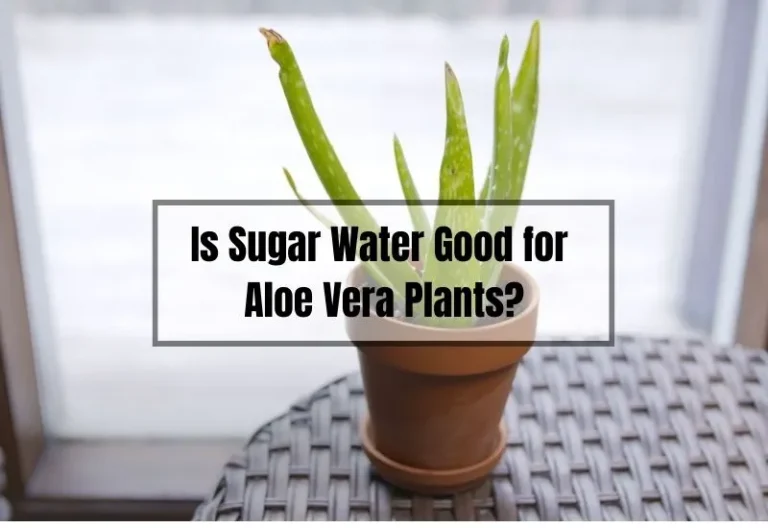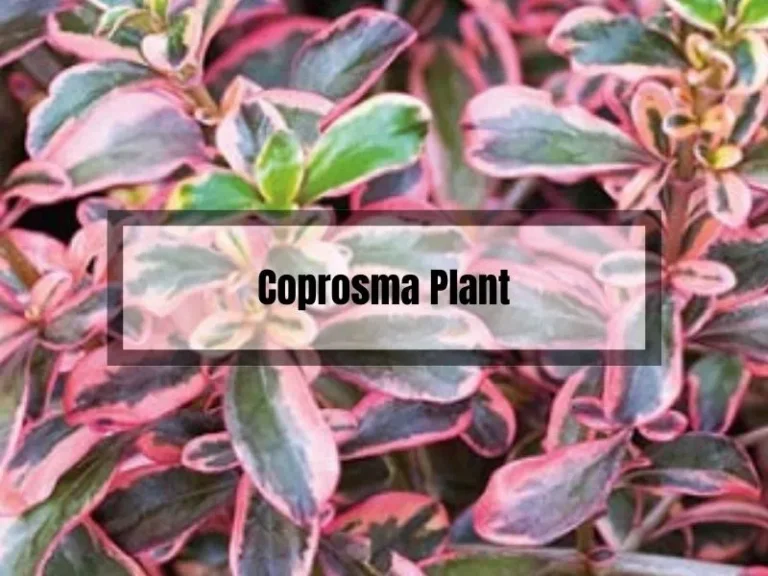Balcony Gardening for Beginners: Tips and Tricks for a Lush Outdoor Oasis
If you’re looking to start a garden but don’t have a lot of space, balcony gardening might be the perfect solution for you. It’s a great way to grow your own fresh produce, herbs, and flowers, even if you live in an apartment or have limited outdoor space.
With a little bit of planning and some basic supplies, you can create a thriving garden right on your balcony.

Understanding balcony gardening is the first step to success. You need to consider the amount of sunlight your balcony gets, the weight capacity of your balcony, and whether your building allows balcony gardening.
Once you’ve assessed these factors, you can start planning your garden. Choosing the right plants for your space, planting techniques, pest control, and maintenance are all important aspects of balcony gardening. With a little bit of effort, you can have a beautiful garden that provides fresh produce and flowers all season long.
Key Takeaways
- Understanding the amount of sunlight and weight capacity of your balcony is crucial for a successful garden.
- Choosing the right plants, planting techniques, and pest control are important aspects of balcony gardening.
- With a little bit of effort, you can have a thriving garden that provides fresh produce and flowers all season long.
Understanding Balcony Gardening

If you’re new to gardening, starting with a balcony garden is a great way to get started. Balcony gardening is a type of container gardening where you grow plants in pots or other containers on your balcony.
It’s a great option for people who live in apartments or other small spaces where traditional gardening isn’t possible. In this section, we’ll explore why you might choose balcony gardening and some potential challenges you might face.
Why Choose Balcony Gardening
There are many reasons why you might choose balcony gardening. Here are a few:
- Limited Space: If you live in an apartment or other small space, balcony gardening is a great way to make the most of your limited space. You can grow a variety of plants in a small area and create a beautiful outdoor space.
- Accessibility: Balcony gardening is a great option for people with limited mobility. You can place your containers at a height that’s comfortable for you, making it easier to tend to your plants.
- Cost-effective: Balcony gardening can be a cost-effective way to grow your own produce. You can start with just a few containers and expand your garden over time.
Potential Challenges
While balcony gardening has many benefits, there are also some potential challenges you might face. Here are a few:
- Limited Sunlight: Depending on the orientation of your balcony, you may not get enough sunlight for certain plants. Be sure to choose plants that are well-suited to the amount of sunlight your balcony receives.
- Weight Restrictions: Depending on the structure of your balcony, there may be weight restrictions that limit the size and number of containers you can use. Be sure to check with your building management before starting your garden.
- Pests and Diseases: Balcony gardens can be more susceptible to pests and diseases than traditional gardens. Be sure to monitor your plants regularly and take steps to prevent and treat any issues that arise.
Related Posts:
- Miniature Indoor Rose Problems: Unveiling Troubles and Discovering Quick Solutions
- Root Rot in Plants: Spotting, Preventing, and Treating for Thriving Gardens
- Gerbera Daisy Leaf Problems: Common Causes and Solutions
Getting Started

If you’re new to balcony gardening, getting started can seem overwhelming. But don’t worry! With a little planning and the right tools, you can create a thriving garden on your balcony.
Creating a Gardening Plan
Before you begin, it’s important to create a gardening plan. Consider the following:
- What plants do you want to grow? Choose plants that are suited to your balcony’s conditions, such as the amount of sunlight it receives.
- How much space do you have? Measure your balcony and determine how much space you have for containers and planters.
- What is your budget? Determine how much you’re willing to spend on plants, containers, soil, and other gardening supplies.
Once you have a plan in place, you can start gathering the essential tools you’ll need.
Essential Tools
Here are some essential tools you’ll need to get started with balcony gardening:
- Containers: Choose containers that are suited to the plants you want to grow. Make sure they have drainage holes to prevent water from pooling at the bottom.
- Soil: Use potting soil that is designed for container gardening. It should be lightweight and well-draining.
- Watering can or hose: You’ll need a way to water your plants. Choose a watering can or hose that is suited to the size of your balcony.
- Hand tools: You’ll need a trowel, pruning shears, and other hand tools to plant and maintain your garden.
Budgeting
Balcony gardening can be done on a budget. Here are some tips to help you save money:
- Start small: Begin with a few plants and containers and gradually expand your garden as you gain experience.
- Buy in bulk: Consider buying soil and other supplies in bulk to save money.
- Look for deals: Shop around for the best prices on plants and gardening supplies. Consider buying used containers or repurposing items you already have.
With a little planning and the right tools, you can create a beautiful and thriving garden on your balcony.
Related Posts:
- Best Garden Carts for Seniors: Comfortable Solutions for Your Gardening Needs
- Best Lightweight Garden Hose for Easy Watering
- Best Garden Kneeler for Bad Knees: Top Picks for Comfortable Gardening
Choosing the Right Plants
When it comes to balcony gardening, choosing the right plants is crucial to the success of your garden. You need to consider a few factors before selecting the plants that will thrive in your balcony garden.
Understanding Your Climate
The first thing you need to consider is your climate. Different plants thrive in different climates. Some plants require a lot of sunlight, while others prefer shady areas.
You need to understand the amount of sunlight your balcony receives throughout the day. If your balcony receives direct sunlight for most of the day, you can grow plants that require full sun.
On the other hand, if your balcony receives limited sunlight, you should choose plants that can grow in partial shade.
Identifying Available Space
The second factor to consider is the available space in your balcony. You need to measure the area and determine the size and weight limitations.
You should also check your building’s rules and regulations to ensure that you are allowed to grow plants on your balcony.
Once you have identified the available space, you can choose plants that fit within your space limitations. You can grow plants in pots, containers, or hanging baskets to maximize your space.
Maintenance Requirements
The third factor to consider is the maintenance requirements of the plants. You need to choose plants that are easy to care for and do not require a lot of maintenance. Some plants require regular watering, while others can survive with minimal watering. You should also consider the fertilizer requirements and the frequency of pruning.
When choosing the right plants for your balcony garden, it is important to consider all these factors. You should choose plants that can thrive in your climate, fit within your available space, and require minimal maintenance. By doing so, you can create a beautiful and thriving balcony garden that you can enjoy all year round.
Planting Techniques
When it comes to balcony gardening, planting techniques are essential to ensure the success of your plants. Here are some tips to help you get started.
Potting and Repotting
Choosing the right pot is crucial for the health of your plants. Make sure the pot has drainage holes to prevent water from accumulating and causing root rot. When repotting, choose a container that is one size larger than the current one, and use fresh soil.
Watering Tips
Watering is one of the most important aspects of balcony gardening. Overwatering can lead to root rot, while underwatering can cause your plants to wilt and die.
The general rule of thumb is to water your plants when the top inch of soil is dry. Use a watering can or a hose with a gentle spray to avoid damaging the plants.
Pruning Basics
Pruning is essential for maintaining the health and shape of your plants. Regular pruning encourages new growth and prevents overcrowding.
Use clean, sharp scissors or pruning shears to make clean cuts. Remove any dead or yellowing leaves, and cut back any overgrown branches.
Pest Control and Maintenance
Maintaining your balcony garden is crucial for its success. Proper pest control and regular maintenance can help keep your plants healthy and thriving.
Organic Pest Control Methods
Using organic pest control methods is a safe and effective way to keep pests at bay without harming your plants or the environment. Some effective organic pest control methods include:
- Introducing beneficial insects such as ladybugs, lacewings, and praying mantises that prey on pests like aphids, spider mites, and thrips.
- Using neem oil, which is a natural pesticide derived from the neem tree that can repel and kill a wide range of pests.
- Making your own insecticidal soap by mixing water, dish soap, and vegetable oil. This solution can be sprayed on plants to kill pests like spider mites, aphids, and whiteflies.
Using Fertilizers
Fertilizing your plants is important to ensure they receive the necessary nutrients for healthy growth. There are many different types of fertilizers available, including organic and synthetic options. Organic fertilizers are derived from natural sources such as compost, manure, and bone meal, while synthetic fertilizers are made from chemicals.
When choosing a fertilizer, consider the needs of your specific plants and the nutrients they require. Some common nutrients that plants need include nitrogen, phosphorus, and potassium. Be sure to follow the instructions on the fertilizer package, as over-fertilizing can burn your plants and cause damage.
Conducting Routine Checks
Conducting routine checks of your balcony garden is important to catch any issues early on and prevent them from becoming bigger problems. Here are some things to check for during your routine checks:
- Signs of pests or disease
- Soil moisture levels
- Plant growth and health
- Nutrient deficiencies
By catching issues early, you can take action to correct them before they cause serious damage to your plants.
Harvesting and Replanting
Once your balcony garden starts producing, it’s important to know how to properly harvest and replant to keep your garden thriving. Here are some tips to help you get the most out of your balcony garden.
Harvesting Your Produce
When it comes to harvesting your produce, timing is key. Most vegetables and herbs are best harvested when they are young and tender. Be sure to check the recommended harvesting times for each plant you have in your garden.
Here are some general tips for harvesting common balcony garden produce:
- Tomatoes: Harvest when they are fully ripe and have a deep, even color.
- Peppers: Harvest when they are firm and have a glossy appearance.
- Herbs: Harvest in the morning when the oils are most concentrated.
- Lettuce and other greens: Harvest when the leaves are young and tender.
Remember to always use clean, sharp tools when harvesting to avoid damaging your plants.
Replanting Tips
To keep your balcony garden producing, it’s important to replant as needed. Here are some tips to help you replant your garden:
- Replace plants as they finish producing: Once a plant has finished producing, remove it and replant with a new seedling.
- Consider companion planting: Planting certain plants together can help them grow better and deter pests. For example, planting basil near tomatoes can improve the flavor of the tomatoes and repel pests.
- Rotate your crops: Rotating your crops can help prevent soil-borne diseases and pests. Move plants to different locations in your garden each year.
Understanding Seasonal Plants
Understanding which plants grow best in which season is crucial for a successful balcony garden. Some plants, such as tomatoes and peppers, thrive in warm weather, while others, such as lettuce and spinach, prefer cooler temperatures.
Here are some general guidelines for planting seasonal crops in a balcony garden:
- Spring: Plant cool-weather crops such as lettuce, spinach, and peas.
- Summer: Plant warm-weather crops such as tomatoes, peppers, and herbs.
- Fall: Plant cool-weather crops such as broccoli, cauliflower, and kale.
By following these tips, you can keep your balcony garden producing year-round.
Related Posts:
- How to Deadhead Canna Lilies: Maximize Your Blooms This Summer
- Is it Too Late to Sow Cosmos Seeds? Tips for Late Bloomers
Troubleshooting Common Issues
As a beginner balcony gardener, you may encounter some common issues. Here are some tips to help you troubleshoot these problems.
Preventing Diseases
One of the most important things you can do to prevent diseases in your balcony garden is to keep your plants healthy. This means providing them with the right amount of water, sunlight, and nutrients. Make sure to also keep your plants clean and free from debris, as this can attract pests and diseases.
Another way to prevent diseases is to choose disease-resistant plants. Some plants are naturally more resistant to diseases than others. For example, marigolds are known to repel pests and help prevent diseases in other plants.
Dealing with Overwatering
Overwatering is a common problem in balcony gardens, especially for beginners. It’s important to remember that plants need water, but they also need oxygen. When you overwater your plants, you drown their roots and prevent them from getting the oxygen they need.
To prevent overwatering, make sure to use well-draining soil and pots with drainage holes. You can also check the soil moisture level by sticking your finger into the soil. If it feels dry, it’s time to water your plants. If it feels moist, wait a few days before watering.
If you’ve already overwatered your plants, you may notice yellowing leaves, wilting, or root rot. To fix this, stop watering your plants for a few days and let the soil dry out. You may also need to repot your plants into fresh soil.
Addressing Sunlight Issues
Sunlight is essential for plant growth, but too much or too little can cause problems. If your balcony gets too much sun, your plants may dry out and wilt. If it gets too little sun, your plants may not grow properly or may become leggy.
To address sunlight issues, you can use shade cloth or umbrellas to provide shade for your plants. You can also choose plants that are suited to the amount of sunlight your balcony receives.
For example, if your balcony gets a lot of sun, choose plants that are drought-tolerant and can handle full sun. If your balcony gets very little sun, choose plants that are shade-tolerant.
Related Posts:





